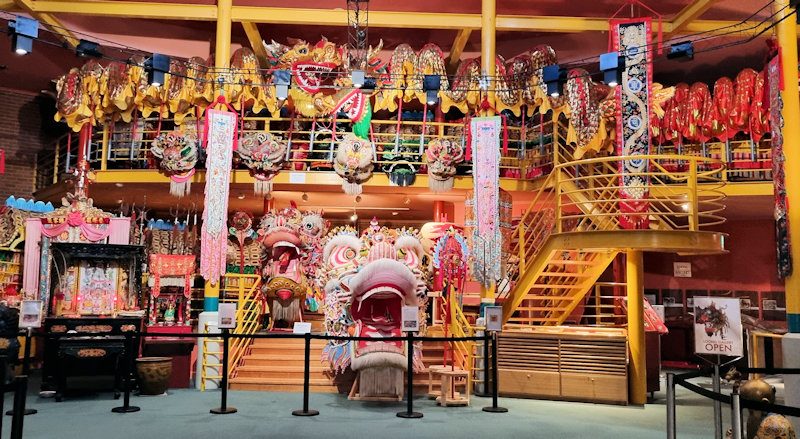Established in 1991, the Golden Dragon Museum in Bendigo, Victoria is widely regarded as Australia’s premier museum dedicated to Chinese heritage. The museum tells the story of a community that overcame prejudice, adapted to a new world, and helped shape the cultural and economic fabric of regional Victoria.
Located in the heart of Bendigo’s historic Chinese precinct, the museum celebrates the Chinese contribution to the city from the gold rush of the 1850s to the present day. It houses the world’s longest imperial dragon, alongside thousands of artefacts, photographs, and personal stories.
Chinese Heritage in Bendigo
In the 1850s, the discovery of gold in Victoria brought people from around the world to the region, including a significant influx of Chinese migrants, many of whom arrived via Hong Kong. Bendigo quickly became home to one of the largest Chinese populations in colonial Australia.
Initially subjected to harsh discrimination, including special taxes and exclusion from European settlements, Chinese migrants established their own camps and societies. Despite adversity, they became essential contributors to the local economy, particularly through gold mining, market gardening, and small business.
They also brought rich cultural traditions, including religious practices, arts, language, and vibrant public celebrations. Bendigo’s annual Easter Procession, which began in the 1870s, remains famous for the Chinese community’s spectacular contributions — dragons, lions, and traditional performers.
Golden Dragon Museum Bendigo
The Golden Dragon Museum was created by the Bendigo Chinese Association, which has been active since 1872. The museum’s name honours the association’s ceremonial dragons, most notably Sun Loong, once the longest imperial dragon in the world.
The Golden Dragon Museum houses one of the finest collections of Chinese-Australian cultural artefacts in the country.
The centrepiece of the museum is its collection of imperial parade dragons:
- Sun Loong: The world’s longest imperial dragon until 2019, stretching over 100 metres. Made in Hong Kong in 1970, Sun Loong led Bendigo’s Easter parade for nearly 50 years.
- Loong: Australia’s oldest surviving imperial dragon, brought to Bendigo in 1892. Loong was retired in 1970 and is now preserved as a precious historic artefact.
- Dai Gum Loong: The new parade dragon unveiled in 2019, continuing the tradition with modern materials and design is 125m long.
These dragons are supported by intricate costumes, lion heads, banners, and ceremonial regalia.
The museum’s galleries feature finely detailed ceramics, jade carvings, embroidery, and religious artefacts, reflecting centuries of Chinese craftsmanship. Many pieces were gifted to the community or brought over by families during the 19th and early 20th centuries.
In addition, items used in daily life in the goldfields such as opium pipes, cooking tools, calligraphy brushes, fans, and even traditional Chinese medicine bottles are on display.
Photographs, letters, oral histories, and family heirlooms show how generations of Chinese immigrants adapted to Australian society while maintaining their cultural heritage.
The museum houses several objects from the original Joss House (temple), which was once located on the site. These include Taoist statues, ancestral tablets, and ceremonial items.
Temple and Gardens
Adjacent to the museum building, the surrounding grounds contain a Chinese Garden and Temple.
This was an interesting and educational visit (as well as very colourful). A great place to visit if you are in Bendigo and learn about the Chinese contribution to Australia.













Our photos are available for purchase on
For other places to visit in Victoria click here

Leave a Reply